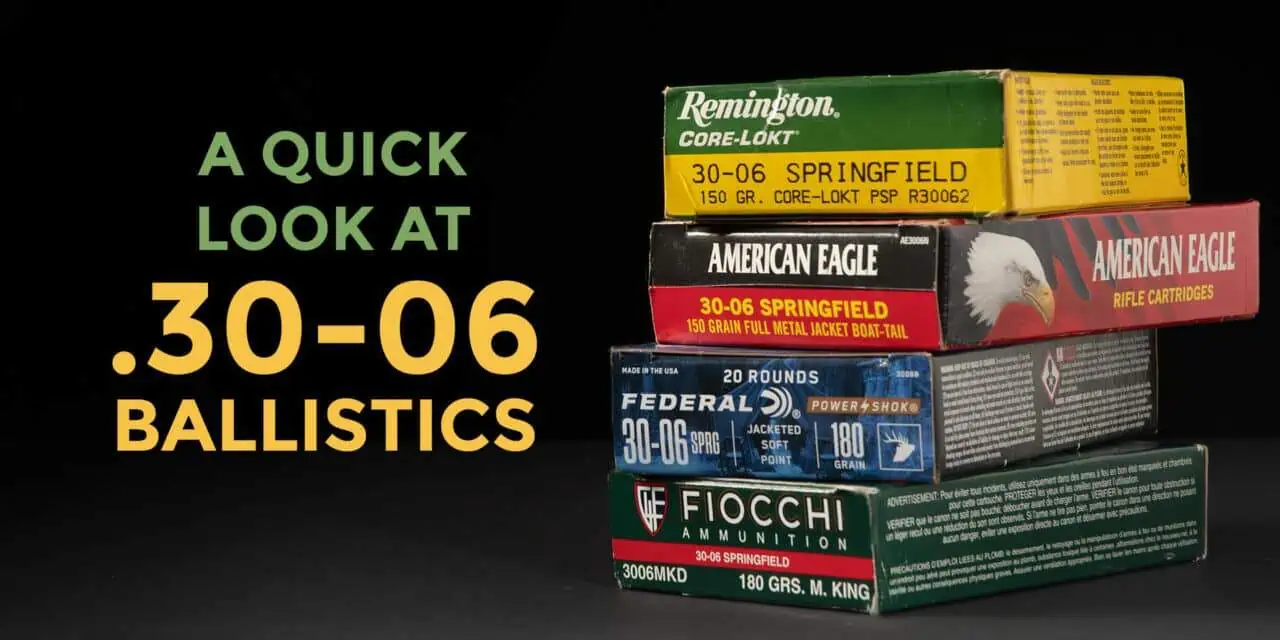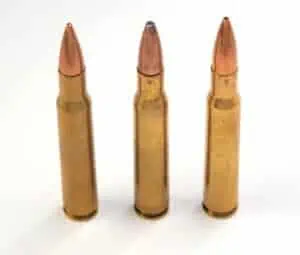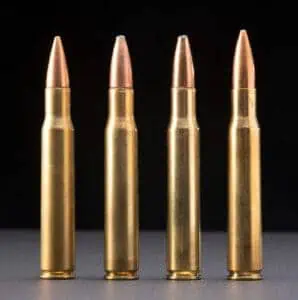Old School Firepower: Testing 30-06 Ballistics
General Patton famously labeled the M1 Garand as “the greatest battle implement ever devised.” A rifle, however, is only as good as the cartridge it fires. In the case of the M1 Garand, it’s the tried and true .30-06 Springfield cartridge.
Even now, decades after the M1 has been retired from service, .30-06 Springfield is still a very popular cartridge. .30-06 or “Aught six” for short, is a popular choice for hunting, shooting competitions and other range activities. .30-06 has remained popular for well over a century, and with good reason. It has the punch to take down most North American game and is available in a wide range of bullet weights and types. Let’s look at some of those cartridges and what they can do, and do a test of 30-06 ballistics to see what’s available to today’s shooters.
Fast Facts: 30-06 ballistics
- The .30-06 is based on the earlier 30-03 cartridge
- Long history of use for hunting, sport and military purposes
- Maximum effective range tops out at around 1000 yards
The .30-06 cartridge traces its roots back to the M1093 Springfield rifle. The M1903 replaced the Model 1892-99 rifle, a copy of the Norwegian Krag–Jørgensen bolt action rifle. Experience in the Spanish-American War showed that the Krag, as it was more commonly known, was outclassed by other comparable rifles such as the German Mauser, and the military soon switched to a new rifle and a new cartridge, the M1903 and the .30-03 round.
Bullet Points Made Difference. No, Really.
The .30-03 round, however, used an older, round nose cartridge that wasn’t as aerodynamically efficient as other bullet designs. The military quickly updated the 30-03 round with a pointed aka “spitzer” bullet, and the .30-06 round was born. The cartridge continued to evolve, with standard bullet weights ranging from 150 grains to 174 grains. 30-06 ballistics continued to evolve as other bullet types more suitable for hunting were introduced as the cartridge moved off the battlefield and into the hands of American sportsmen.
Today, there is 30-06 ammo in a wide range of bullet weights and sizes. This means that optimizing your gun and creating a 30-06 ballistics table depends on what gun you’re using and your reasons for shooting that gun. A day at the range reliving the glory days of WWII is going to require different ammo than hunting deer from a blind. With that in mind, we’re going to test four common 30-06 cartridges and what they might do for your and your rifle.
Testing 30-06 Ballistics
The ammo we’ll be testing is:
Federal American Eagle 150 grain FMJ
Remington Core-Lokt 150 grain PSP
Federal 180 grain JSP
Fiocchi 180 grain HPBT Match
The Remington 150 grain and Federal 180 grain are soft-nosed cartridges, making them good choices for a hunting round. The Federal 150 grain round is a full metal jacket round. This makes it very suitable for a day shooting at the range, but not a good choice for hunting. The Fiocchi round is a hollow-point round, which means it will open up on impact and damage the target more than an FMJ round will. However, it’s also match ammunition, which means that a little more care is put into making everything consistent, and its Sierra MatchKing bullet has a proven legacy of performance both at the range and in the field.
We’ll be using a sporterized M1903 rifle with a 24 inch barrel in our 30-06 ballistics tests, with a Shooty F1 chronograph placed at the muzzle to measure velocity. We’ll fire ten rounds of each ammo in order to find a spread of minimum, maximum and average velocities. In addition to this, because consistent results are a key to accuracy, we’ll also perform a standard of deviation calculation to measure the uniformity of the ammunition we test.
Punching The Numbers on 30-06 Ballistics
| Maker | Bullet Type | Bullet Weight | Minimum Velocity (fps) | Maximum Velocity (fps) | Average Velocity (fps) | Standard Deviation (fps) |
|---|---|---|---|---|---|---|
| Remington Core-Lokt | Soft Point | 150 | 2602 | 2880 | 2602 | 102 |
| Federal | Full Metal Jacket | 150 | 1806 | 2017 | 1908 | 90 |
| Federal | Soft Point | 180 | 1647 | 1848 | 1761 | 73 |
| Fiocchi | Hollow Point Match | 180 | 2235 | 2355 | 2309 | 43 |
Pulling these numbers into a ballistic calculator app gives us a better understanding of .30-06 ballistics and what this round can do. Two things become clear right away.
| Muzzle Energy (ft/lbs) | 100 Yards | 200 Yards | 400 Yards | 600 yards | 800 yards | 1000 yards |
|---|---|---|---|---|---|---|
| Federal 150 Grain FMJ Velocity | 1736 | 1575 | 1300 | 1105 | 987 | 907 |
| Remington 150 Grain Core-Lokt Velocity (fps) | 2497 | 2259 | 1822 | 1450 | 1171 | 1007 |
| Federal 180 Grain Power-Shok Velocity (fps) | 1604 | 1461 | 1221 | 1061 | 962 | 891 |
| Fiocchi 180 Grain HPBT Velocity (fps) | 2141 | 1980 | 1677 | 1396 | 1143 | 1013 |
The Remington round packs a wallop, not surprising considering it’s to be used as a hunting round. Also, the Fiocchi round has both a high bullet weight and high muzzle velocity working in its favor. Add those two data points to the reputation of the Sierra MatchKing bullet and a low standard of deviation, and this is now my round of choice for this gun.
All of the rounds slow down and become subsonic well before they reach 1000 yards. This means the bullet will tumble as it passes through the sound barrier, resulting in larger groups on the target when compared to closer distances.
Outdated? No, Not Really.
We should mention here that even though 30-06 ballistics at longer ranges, (1000 yards or so) are not as good as modern cartridges like 6.5mm Creedmoor, the 30-06 round has a devoted cadre of shooters who use the 30-06 round in M-1 Garands to shoot out to 1000 yards, so it can be done, and done well.
While it’s more than a century old, .30-06 is still an excellent hunting round and is accurate out to medium distances, with enough power to bring home the bacon (or venison, or elk backstrap). This, combined with its place in American firearms lore, means the final chapter of the “Aught Six” round has yet to be written, and probably won’t be for quite a long time.




